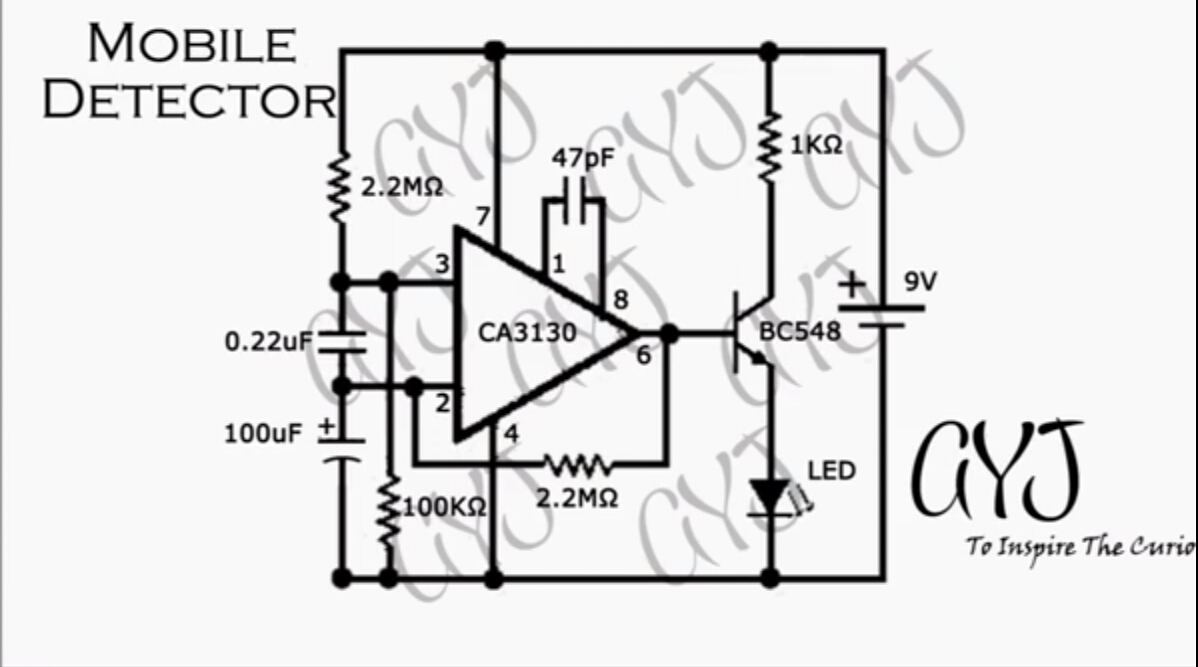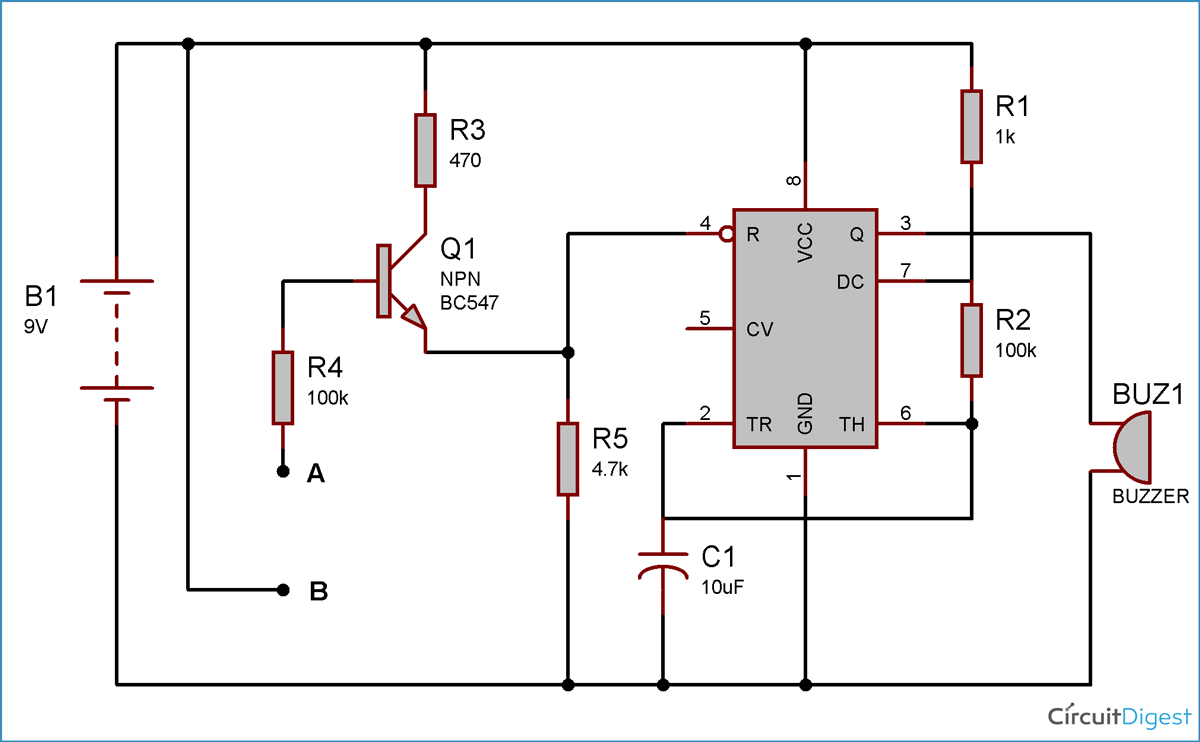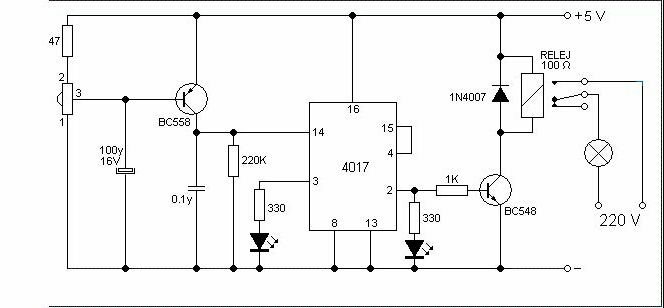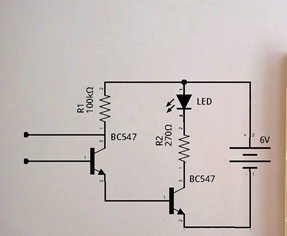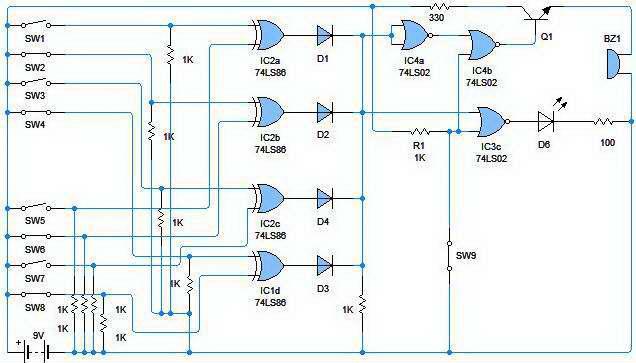
OBJECTIVE:
Due advancement of science and technology throughout the world, there is a consequent increase in rate and sophistication of crime. As a result it is necessary to ensure security of oneself and one’s valuable belongings. Even with the use of mechanical locks, the crime rate still has increased due to the fact that these locks are easily broken. Consequently there is a need for other types of locks especially digital ones.
This work is on the design and construction of a simple digital combinational lock.
COMPONENTS:
- LED
- Buzzer
- Four Diodes
- Eight Switches
- NOR IC 72LS02
- XOR IC 74LS86
- Nine (9v) Volt Battery
- Transistor NPN BC547
- Resistors (100 Ω, 330 Ω, 1kΩ)
CIRCUIT DIAGRAM:

WORKING:
The four XOR gates output terminals are connected through a diode network which functions as a four-input OR gate. If any of the four XOR gates outputs as high signal indicates that the entered code and the key code are not identical. Then a high signal will be passed on to the NOR gate logic. If the two 4-bit codes are identical, then none of the XOR gate outputs will be high. So the pull-down resistor connected to the common sides of the diodes will provide a low signal state to the NOR logic. The NOR gate logic prevent either of the LED or Buzzer from turning on. If the Enter switch is pressed and any of the XOR outputs are high, buzzer will be on indicating that an incorrect code has been entered. If the enter switch is pressed and all outputs are low, then Green LED will glow up which shows that the code is correct.
When Wrong Code Is Entered:
When wrong code is entered the buzzer will be on.

When Right Code Is Entered:
When right code is entered LED will on, which indicates that the code entered is correct.




